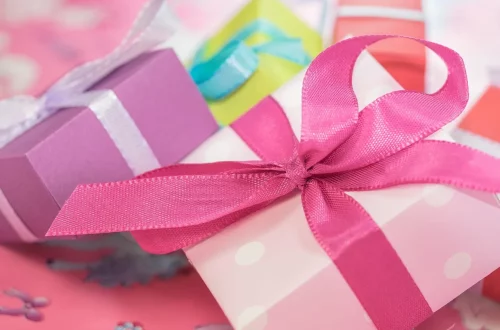
What to Wear to a Wake for Men: A Guide to Appropriate Attire
Navigating the emotional landscape of a wake can be challenging, especially when it comes to what to wear. The attire you choose reflects not only respect for the deceased but also consideration for their grieving family and friends. In many cultures, the wake serves as an opportunity for loved ones to gather, share memories, and find solace in one another. Therefore, selecting the appropriate outfit is essential.
Men often find themselves at a loss when it comes to choosing the right attire for such somber occasions. The balance between looking respectful while also feeling comfortable is crucial. Formality levels can vary depending on the deceased’s wishes, cultural practices, and the specific circumstances surrounding the wake. This can lead to confusion about what is deemed acceptable. It’s important to recognize that while the mood is heavy, your clothing can convey compassion and support without needing to overshadow the memory of the person being honored.
Attending a wake is not just about personal expression; it’s also about showing solidarity with those who are mourning. The clothing choices you make can reflect your understanding of the gravity of the occasion. Here, we will explore various aspects of appropriate attire for men attending a wake, ensuring that you can dress suitably while also paying homage to the individual who has passed away.
Understanding the Significance of Attire at a Wake
Choosing the right outfit for a wake is about more than just following fashion guidelines; it’s about understanding the significance behind your choices. In many cultures, funerals and wakes serve as important rites of passage, allowing individuals to honor the life of the deceased while also providing a space for collective grief. The attire you choose sends a message about your respect for the occasion and the people involved.
Typically, the unspoken dress code at a wake leans towards the conservative end of the spectrum. Dark, muted colors such as black, navy, or deep gray are often preferred, as they symbolize mourning and respect. Bright colors or overly casual attire may be considered inappropriate. However, this does not mean that you have to sacrifice personal style entirely. There are ways to incorporate subtle elements that reflect your personality while still adhering to the expected norms.
Additionally, the type of wake can influence dress codes. For instance, a traditional wake may call for formal attire, such as suits and ties, whereas a more casual celebration of life might allow for smart-casual outfits. Understanding the specific context of the wake you are attending is essential. If you are uncertain, it is always better to err on the side of caution and dress more formally.
Ultimately, the goal is to create an atmosphere of support and solidarity. Your choice of clothing should reflect sensitivity to the emotional state of others and the gravity of the occasion. By understanding the significance of your attire, you can contribute positively to the environment of remembrance and mourning that a wake embodies.
Essential Clothing Items for Men Attending a Wake
When preparing for a wake, there are several essential clothing items that every man should consider. These pieces not only help you look appropriate but also ensure comfort during what can be a long event filled with emotional moments.
First and foremost, a well-fitted suit is a classic choice for a wake. Opt for dark colors such as charcoal or navy, as they convey a sense of respect. A tailored suit jacket paired with matching trousers creates a polished look without being overly formal. If a full suit feels too heavy for the occasion, smart dress pants paired with a crisp button-up shirt can be an excellent alternative. Choose a neutral color for the shirt, avoiding bright patterns or flashy designs.
Footwear is another crucial aspect of your outfit. Leather shoes are often considered the best option, as they add a touch of formality. Black or dark brown shoes in a polished finish work well. Ensure that your shoes are clean and in good condition, as scuffed or worn-out footwear can detract from an otherwise respectable appearance.
Accessories should be kept minimal to maintain a subdued look. A simple tie can add a touch of elegance, but it should not be a distracting pattern or color. If you choose to wear a tie, a solid color or subtle pattern works best. Additionally, a classic wristwatch can be a fitting accessory, but avoid anything too flashy or ostentatious.
Finally, consider the weather and venue. If the wake is held outdoors or in a more casual setting, you may opt for lighter fabrics or layers. A lightweight blazer or sweater can be a good addition if temperatures are uncertain. Dressing appropriately for the environment shows consideration for the occasion and those attending.
By thoughtfully selecting these essential clothing items, you can ensure that you look respectful and feel comfortable while attending a wake, allowing you to focus on supporting those who are grieving.
Grooming and Personal Presentation
In addition to choosing the right attire, grooming and personal presentation play a significant role in how you are perceived at a wake. A well-groomed appearance signals respect for both the deceased and those in mourning. It reflects your understanding of the occasion and your desire to contribute positively to the environment.
Start with grooming your hair. A neat and tidy hairstyle is essential, regardless of your hair length. If you have facial hair, ensure it is well-trimmed and styled. A clean-shaven look or a neatly groomed beard can both work well, depending on your personal style. Avoid hairstyles that may be perceived as overly casual or messy, as they can distract from the solemnity of the event.
Personal hygiene is equally important. Be sure to shower and use deodorant before attending the wake. Fresh breath is also a key consideration, especially if you will be engaging in conversations with others. A subtle fragrance can be nice, but avoid anything overpowering or heavily scented, as this could be overwhelming in close quarters.
Lastly, be mindful of your body language and demeanor. Dress appropriately, and ensure that your posture reflects the gravity of the occasion. Engaging respectfully with others, maintaining a calm and composed presence, and showing empathy through your actions can enhance the overall atmosphere of the wake.
In summary, grooming and personal presentation are vital components of your appearance at a wake. Taking the time to ensure you look presentable not only honors the memory of the deceased but also provides comfort to those who are grieving.
Understanding Cultural and Religious Considerations
When attending a wake, it is crucial to be aware of any cultural or religious customs that may influence the appropriate attire. Different cultures and religions have unique practices surrounding death and mourning, and your outfit should reflect an understanding and respect for these traditions.
For instance, in many Western cultures, black is the traditional color of mourning. However, some cultures may have different color codes or specific attire that is expected. For example, in certain Asian cultures, white is worn as a sign of mourning. Understanding these nuances is essential if you are attending a wake that may not align with your cultural background.
Religious considerations also play a significant role in determining appropriate attire. In many religious settings, modesty is emphasized. For example, some faiths may require that men wear long pants and avoid casual attire like shorts or t-shirts. If you know the religious affiliation of the deceased or the family, take the time to research any specific dress codes that may be customary.
Additionally, some communities may have specific rituals or practices that dictate the type of clothing worn during a wake. For instance, some Jewish traditions encourage wearing a head covering, while certain Indigenous practices may include specific garments or symbols. Being aware of these traditions can help you avoid unintentional disrespect.
If you are unsure about what is appropriate, don’t hesitate to ask a family member or close friend of the deceased for guidance. They can provide insight into their cultural or religious expectations, ensuring that your attire aligns with the occasion.
In conclusion, understanding cultural and religious considerations when choosing your attire for a wake is essential. Respecting these traditions demonstrates empathy and sensitivity towards the grieving family and honors the memory of the deceased.
—
This article is intended for informational purposes only and should not be considered medical advice. Always consult with a qualified healthcare professional for any health-related concerns.




